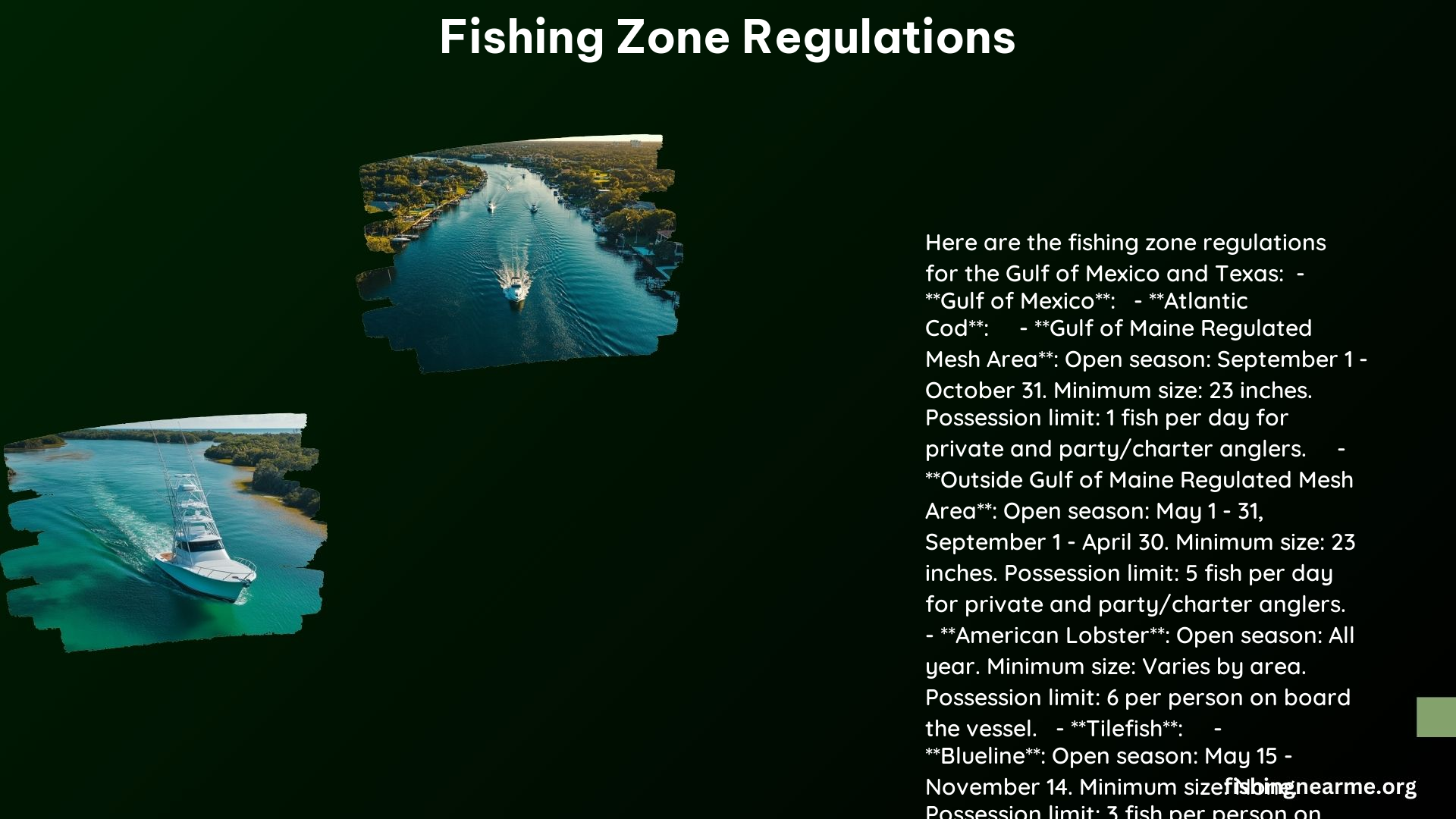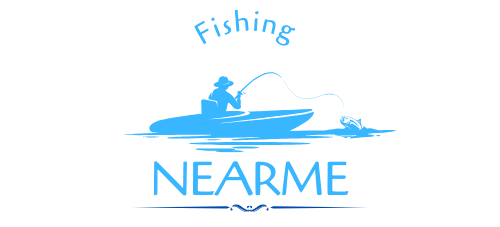Fishing zone regulations are essential for managing and conserving fish populations while ensuring sustainable recreational fishing practices. This comprehensive guide covers the key details and regulations for various fishing zones across the United States and Canada, including the Great Lakes, Oregon, Ontario, and the Gulf of Mexico.
Great Lakes and Tributaries (New York)
The Great Lakes and their tributaries in New York state have specific regulations for various fish species, including black bass, trout, salmon, northern pike, walleye, and muskellunge. These regulations cover open seasons, minimum length requirements, and daily catch limits.
| Species | Season | Minimum Length | Daily Limit |
|---|---|---|---|
| Black Bass | December 1 – June 14 | 20″ | 1 |
| June 15 – November 30 | 12″ | 5 | |
| Brown Trout, Rainbow Trout, Coho Salmon, Chinook Salmon | All year | 12″ | 3 (in any combination) |
| Lake Trout | All year | 12″ | 1 |
| Brook Trout | April 1 – October 15 | No minimum | 5 |
| Northern Pike | May 1 – March 15 | 22″ | 5 |
| Walleye | May 1 – March 15 | 15″ | 6 |
| Muskellunge, Tiger Muskellunge | June 15 – December 15 | 54″ | 1 |
Additionally, there are special seasonal regulations for Lake Erie tributaries, including restrictions on fishing hours and catch-and-release regulations for select tributaries.
Oregon Fishing Zones

Oregon has nine distinct fishing zones, each offering unique opportunities for various fish species, including trout, salmon, bass, and more. Anglers should familiarize themselves with the specific regulations for the zone they plan to fish.
Ontario Fishing Zones
Ontario is divided into 20 Fisheries Management Zones, each with its own set of regulations, including open seasons and catch limits. Anglers can access this information through the Fish ON-line system.
Gulf of Mexico Federal Waters
The Gulf of Mexico federal waters are managed by the National Oceanic and Atmospheric Administration (NOAA) and the Gulf of Mexico Fishery Management Council. Regulations vary by species, including red snapper, grouper, and others, with specific bag limits and size restrictions in place.
Bag Limits and Size Restrictions for Popular Fish Species in Florida Waters
Red Snapper
- Federal waters: 2 per person per day, 16″ minimum length
- State waters: 2 per person per day, 16″ minimum length (seasonal closures apply)
Grouper
- Federal waters: Varies by species, with minimum lengths ranging from 20″ to 40″
- State waters: Varies by species, with minimum lengths ranging from 20″ to 40″
Closed Seasons for Atlantic Red Snapper in Florida
Federal Waters
- Closed season typically runs from January to May, with specific dates varying by year.
State Waters
- Closed season typically runs from January to May, with specific dates varying by year.
Cost and Timings
Fishing Licenses
- Costs vary by state and type of license (e.g., freshwater, saltwater, combination).
- Licenses are typically valid for a specific period, such as a year or a season.
Guided Tours and Charters
- Costs vary by location, type of fishing, and duration of the trip.
- Guided tours and charters are usually available during specific times of the year and day, depending on the location and species targeted.
Directory and Hours
Fishing Guides and Charters
- Directories: Online directories like Fish ON-line (Ontario) or local listings can provide information on guided tours and charters.
- Hours: Vary by guide or charter service, but typically operate during daylight hours or specific times of the day.
Rates and Value
Fishing Licenses
- Rates: Vary by state and type of license.
- Value: Licenses provide access to fishing opportunities and support fish and wildlife management programs.
Guided Tours and Charters
- Rates: Vary by location, type of fishing, and duration of the trip.
- Value: Guided tours and charters offer expert knowledge, equipment, and access to prime fishing locations, enhancing the overall fishing experience.
Real-Life Incidents and Statistics
Overfishing
- Overfishing can lead to depleted fish populations, harming ecosystems and the fishing industry. For example, the Atlantic cod population in the Gulf of Maine declined by 90% between 1978 and 2014 due to overfishing.
Conservation Efforts
- Conservation efforts, such as catch limits and closed seasons, have helped to recover fish populations. For instance, the red snapper population in the Gulf of Mexico has shown signs of recovery due to conservation measures.
Reference
- https://dec.ny.gov/things-to-do/freshwater-fishing/regulations/great-lakes-tributaries
- https://dec.ny.gov/things-to-do/freshwater-fishing/regulations
- https://myodfw.com/fishing/zones
- https://www.ontario.ca/document/ontario-fishing-regulations-summary/fisheries-management-zones-map
- https://www.ontario.ca/document/ontario-fishing-regulations-summary
